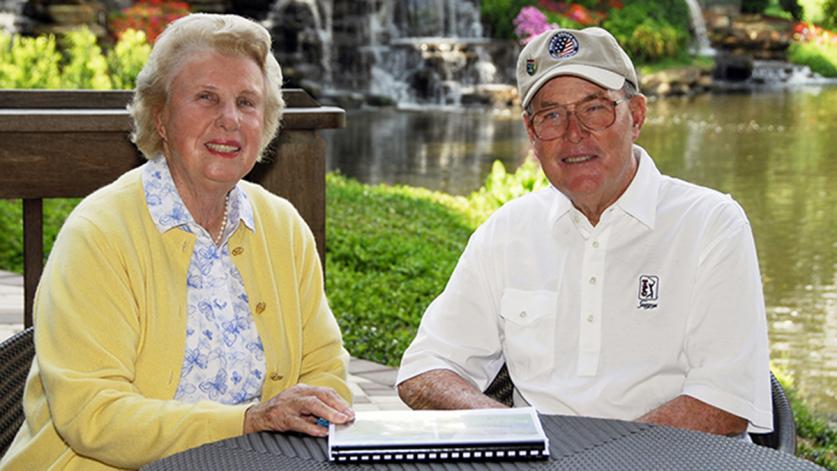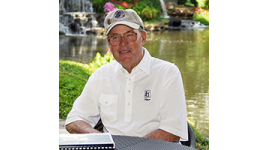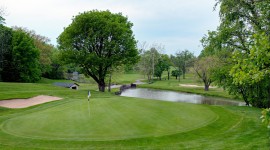Remembering the Designing Duo of American Golf
The recent death of golf course architect Paul (Pete) Dye on January 9, 2020, closed a certain chapter in the history of American golf. Pete was preceded in death by his partner and wife, Alice, who died in February 2019. For decades, the couple and their firm, Dye Designs, were a force in the industry, creating more than 100 golf courses, both international and domestic. Some of their most renowned courses include Crooked Stick in Carmel, Indiana, the Tournament Players Club (TPC) at Sawgrass in Ponte Verde Beach, Florida, and the Stadium Course at PGA West in La Quinta, California.
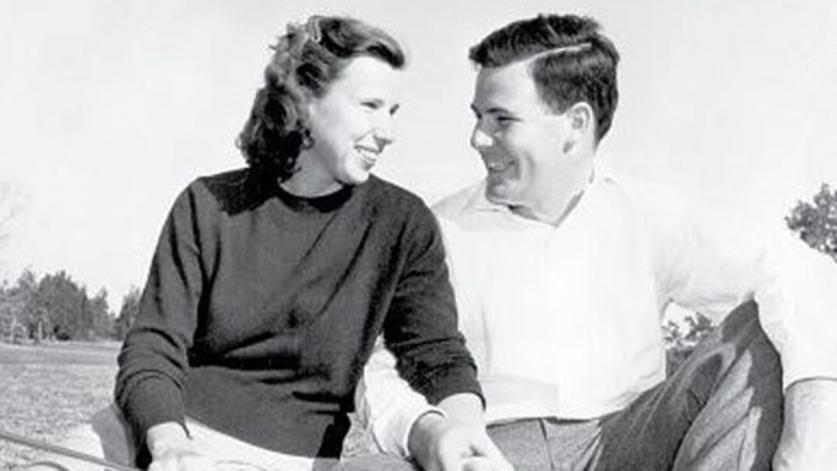
Pete Dye was introduced to golf course design at an early age by his father, Paul Dye, Sr., an amateur golfer who, in 1922, created a nine-hole course on his wife's family property outside Urbana, Ohio, for the newly founded Urbana Country Club. The younger Dye competed successfully in amateur golf tournaments as a youth before enlisting in the U.S. Army during World War II. The war, however, came to an end before Dye completed his training, so he spent much of his time serving as the greenskeeper for the course at Fort Bragg, North Carolina. Following his Army service, Dye enrolled at Rollins College in Florida, where he met his future wife and fellow golf enthusiast Alice O’Neal. The couple married in Indianapolis in 1950, following Alice’s graduation. Dropping out of school, Pete settled with his wife in Indianapolis, where they both worked selling insurance for Connecticut Mutual Life.
It was here in the late 1950s that Dye Designs got its start, when Pete left his position at Connecticut Mutual to pursue a career in golf course architecture. His first commission was the nine-hole El Dorado Country Club (now Dye’s Walk Country Club) south of Indianapolis, which he and Alice designed together under the counsel of golf course architect Bill Diddel in 1959. This project was followed shortly by their first eighteen-hole course, Heather Hills (now Maple Creek Golf and Country Club), also located in Indianapolis. In 1963 the Dyes traveled to Scotland to study classical golf course design, visiting such famous courses as St. Andrews, Muirfield, and Prestwick. Through their studies, they came to appreciate classical design elements, including the diminutive greens, undulating fairways, and railway ties that were standard in Scottish courses but as yet unfamiliar to Americans.
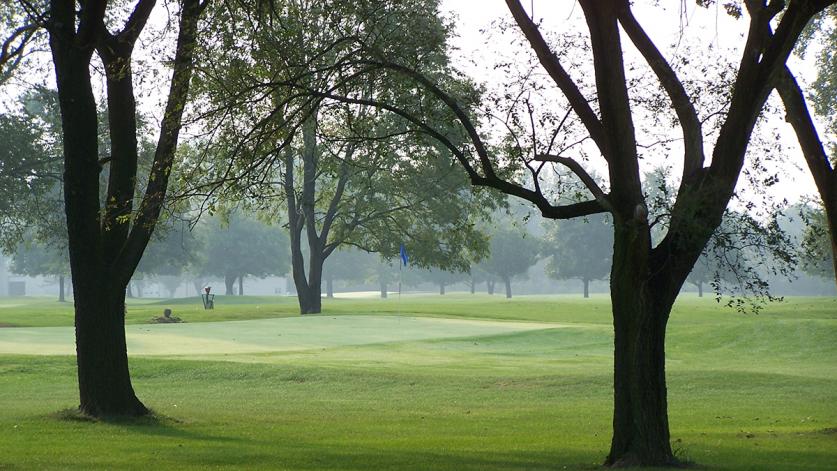
Upon returning to Indianapolis, Pete and Alice transformed a 400-acre cornfield in Caramel, Indiana, into what would become one of their most renowned courses, the Crooked Stick Golf Club. Developed between 1964 and 1967, the course was modelled on traditional Scottish links, incorporating wide fairways, strip bunkers, grass pot bunkers, and water hazards. The success of Crooked Stick opened the door to other commissions nationwide, resulting in the creation of some of America’s most famous and challenging courses. The success of the Dye's first stadium course (a course that includes viewing sites for spectators), TPC Sawgrass, was in large part due to Alice, who designed the seventeenth hole as a 137-yard island green.
As PGA Commissioner Jay Monahan told Golf Channel Digital, Pete “was always quick to credit his beloved wife, Alice, with his success, including the concept for his most famous hole, the 17th island green at TPC Sawgrass. Together, Pete and Alice made a formidable team in golf and life." In a note to TCLF, Ron Whitten, senior editor of Golf Digest, called the Dye family "the Royal Family of golf design." "Pete and Alice are gone now, but their influence will resonate for generations to come," he wrote.
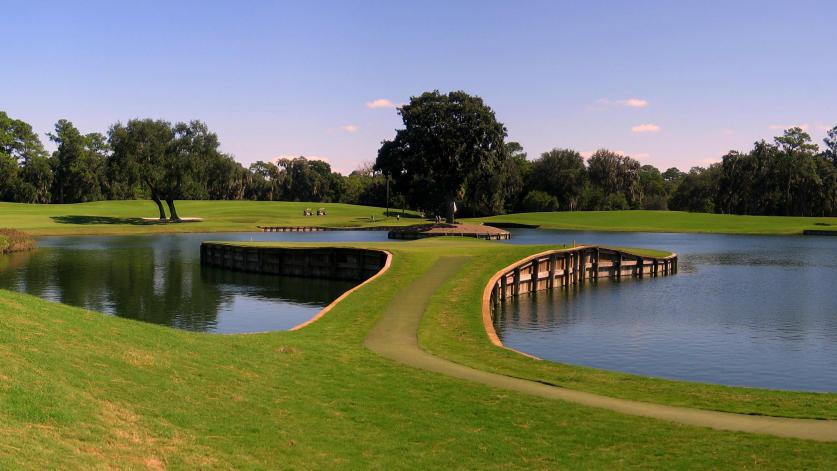
Pete and Alice Dye's use of Scottish design features in their courses inspired later generations of golf course architects to such a degree that some have considered them to be the founders of modern-era golf course architecture. Legendary golfer and designer Jack Nicklaus told ESPN that "[Pete Dye] changed the way we think about golf course design, and how design works. […] Because of the attention that Pete Dye-designed courses have brought to the game, there are lots of people who are now able to make a living at golf course design—me included."
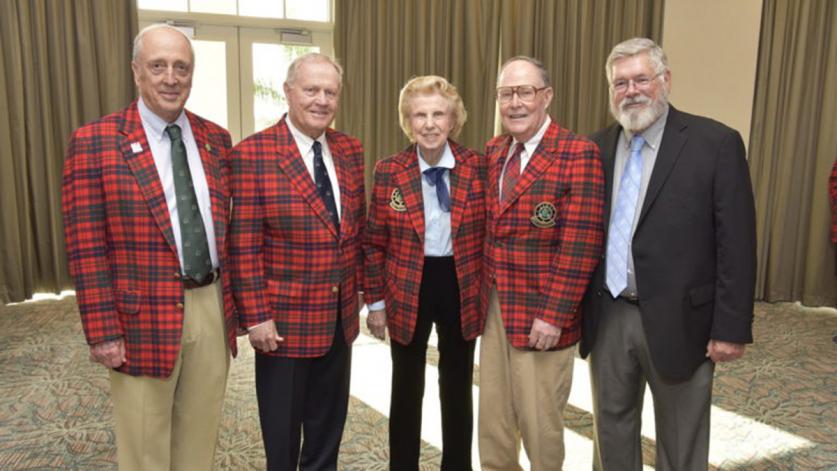
The couple continued to break new ground in other areas as well. In 1983 Alice became the first woman inducted into the American Society of Golf Course Architects, and she would become the first women to serve as its president, in 1997. She was also instrumental in making more courses accessible to women by advocating for a two-tee system and reducing the yardage requirements for women players. For his innovative work, Pete Dye was given the PGA’s Lifetime Achievement Award in 2005, and he was inducted into the World Golf Hall of Fame in 2008, one of only five golf course architects to receive such an honor. He was additionally awarded an honorary doctorate in landscape architecture from Purdue University.

Pete and Alice’s son Perry, who is also a golf course architect, told Golf Digest’s Dave Shedloski in 2018, “My father will be respected most, I think, for loving the game of golf more than just about anyone ever has—in all forms. To play it, to build golf courses for it, and to promote it … that’s what he loved to do. He didn’t care much about anything else except promoting the game and bringing ideas to golf course architecture that would help do that.”
Golf as a recreational pastime has a long history in America, with the earliest links, the South Carolina Golf Club and the Savannah Golf Club, having been designed in 1786 and 1795, respectively. As the game expanded in popularity throughout the late nineteenth century and early twentieth century, amateur players such as Tom Bendelow and Albert Tillinghast established golf course design as a profession, recreating classical Scottish courses and setting standards for the sport in America.
Some golf courses are significant cultural landscapes because of their layered history and unique design influences. Within The Cultural Landscape Foundation’s What’s Out There Database, golf courses are classified by their era of design, ranging from the early landmark period to the modern era. TCLF’s Pioneers of Landscape Design initiative chronicles the careers of several important golf course architects, including Alister Mackenzie, Donald Ross, John Van Cleek, and Roger Packard. Today, there are more than 15,000 designed golf courses in America, some 25 of which are listed in the National Register of Historic Places.
